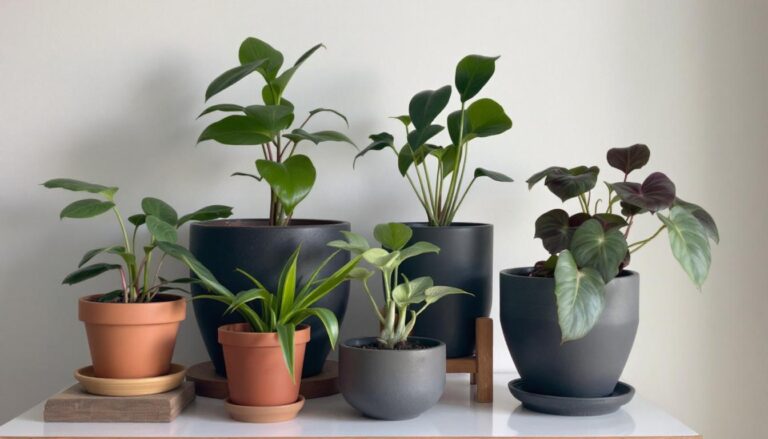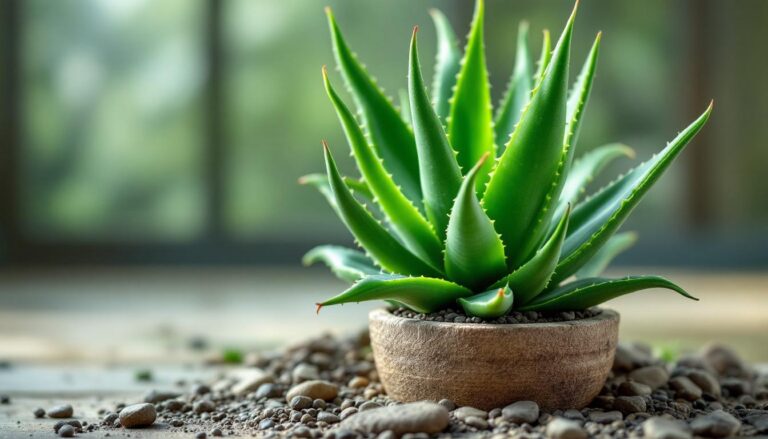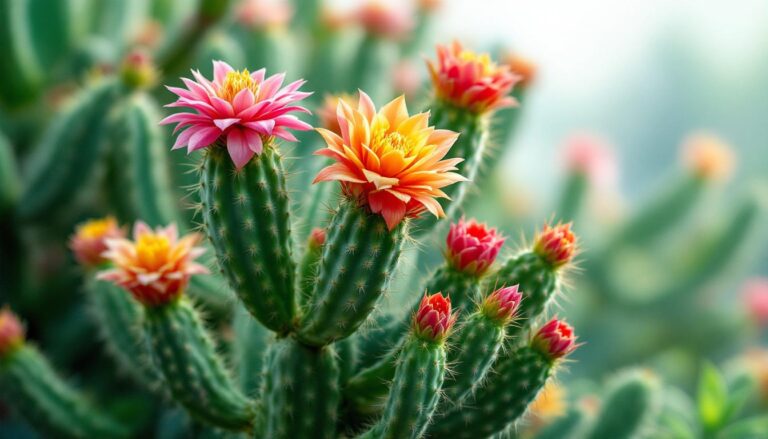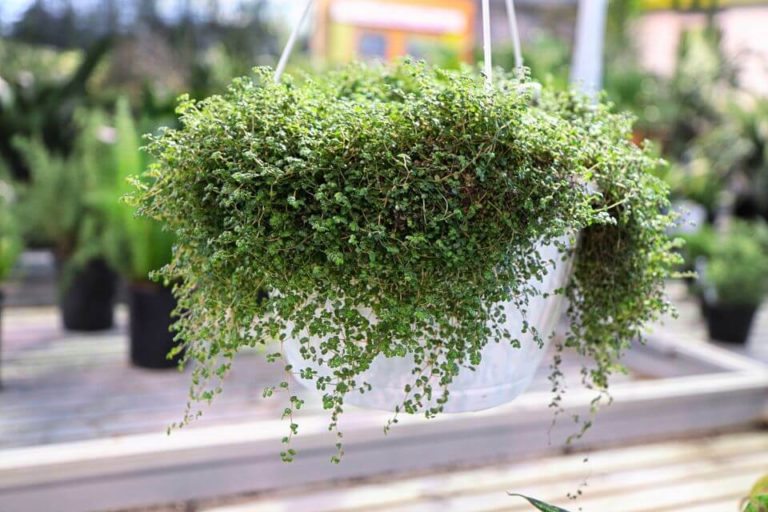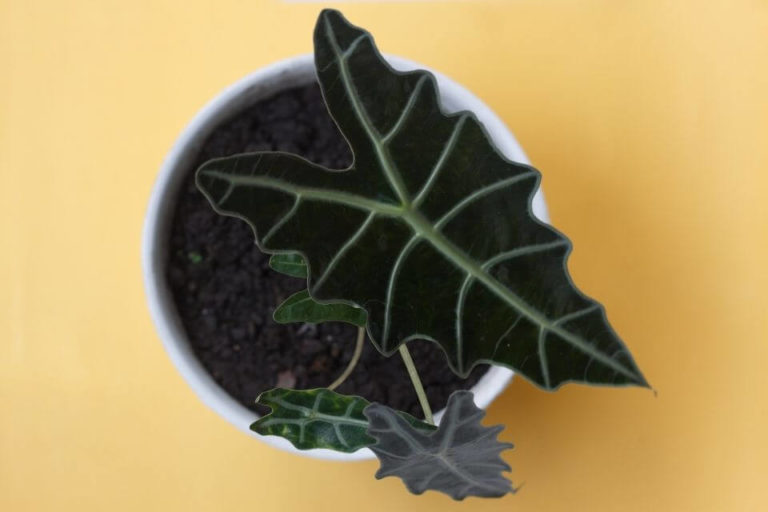Hoya Australis Care Guide: How To Grow & Care for Hoya Australis Plant
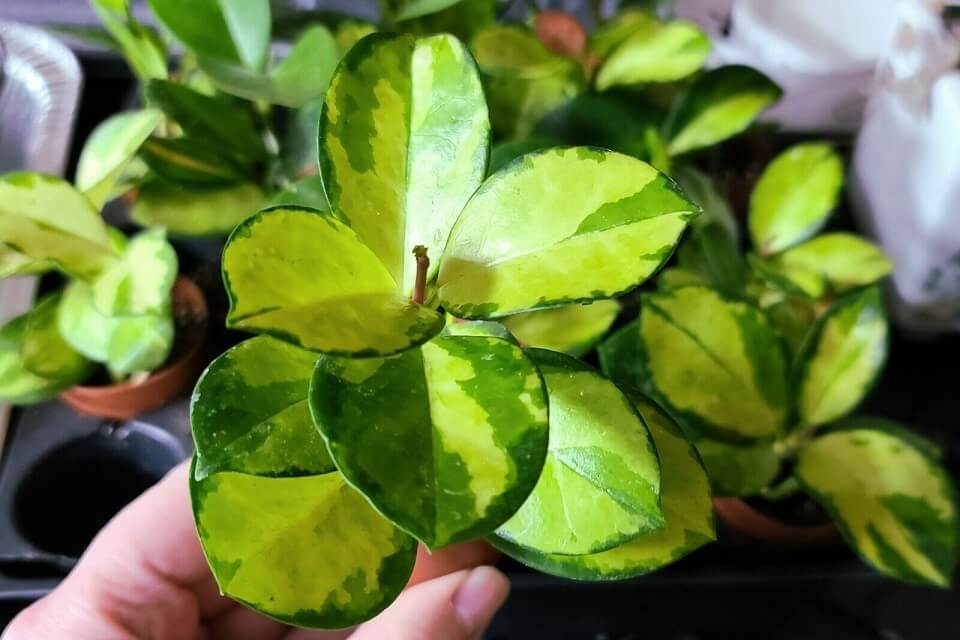
Hoya Australis also known as the Waxvine Plant, is a tropical succulent vine native to Australia. It has thick, waxy leaves that are dark green and can grow between 9 to 30 feet long.
Are you looking for a guide for Hoya Australis Care?
Look no further! This article will discuss everything you need to know about growing and propagating Hoya Australis. The flowers are small and white and bloom in clusters.
It is a popular houseplant because it is easy to care for and propagate. This plant is native to Australia and can be found in many different habitats, including rainforests and dry woodlands. It is an evergreen vine that produces beautiful flowers.
We will cover caring for your Hoya Australis plant, including tips on watering, fertilizing, and pruning. We will also discuss how to propagate this plant by taking stem cuttings.
So if you are interested in learning more about this beautiful Australian plant, keep reading!
TABLE OF CONTENTS
What Is Hoya Australis?
Hoya Australis is a beautiful evergreen vine that is native to Australia. It can be found in many different habitats, including rainforests and dry woodlands.
This plant produces beautiful flowers in many different colors, including white, pink, and red. The leaves of this plant are dark green and glossy.
This plant can grow up to 30 feet long and prefers to climb on trees or other structures. It is an excellent plant for both indoor and outdoor gardens. It is relatively easy to care for and can tolerate various conditions.
Hoya Australis is a straightforward plant to care for, and it is perfect for those who are new to growing plants.
Varieties of Hoya Australis
There are many different varieties of Hoya Australis. Some of the most popular types include:
Hoya Australis Lisa:
Hoya Australis Lisa is the most popular and variegated cultivar of the Hoya Australis and is one of the slow-growing varieties than other varieties.
This Hoya vine variety will climb up to about 30 feet when a proper base is found. This Lisa plant leaf has pink fading with green and cream color shading making a very beautiful appearance.
Hoya Australis Lisa plant is also known as very rare among other Hoya varieties. A healthy Australis Lisa plant will bloom as a white star-shaped flower that smells a very sweet smell of Cholocate and Vanilla mixed.
Hoya Australis Oramicola:
This variety of Hoya Australis blooms has fragrant flowers that are white or pink. The leaves of this plant are dark green. The Hoya australis Oramicola will bloom from March through July, and its flowers are fragrantly attractive.
The leaves of this variety are oval-shaped and have a lovely reddish color in bright light.
Hoya Australis Rupicola:
This variety has beautiful red and white flowers. The leaves of this plant are dark green and glossy. This plant blooms from March to July, and its flowers are fragrant with long and pretty slender foliage. It is mainly found growing around rocks.
Hoya Australis Kapaho:
The Kapaho has glossy green leaves from the Hoya australis family. This one’s new growth is pointed in form. However, once the plant matures, the leaves become rounder.
The flowers of this variety are white with pink centers, and they bloom from March to July.
Hoya Australis Grande:
This is another popular, well-known, popular variety due to its large leaves. The curvy blooms consist of an elegant cluster of delicate star-shaped petals with a bit of curl and hints of rose under the inner star.
Hoya Australis Tenuipes:
This variety is similar to the Hoya Australis Rupicola, but it has narrower leaves. The flowers of this plant are white with red centers and attract wildlife like hummingbirds. It requires more water compared to other varieties.
Hoya Australis Brookfield:
This variety has white-colored buds and is more prominent than Hoya australis Tenuipes. This type has beautiful leaves featuring golden-colored veins and bronze juvenile growth.
Hoya Australis Size & Appearance
it can grow up to 30 feet in length. However, most varieties only grow to about 12 to 15 feet in length. The leaves of this plant are dark green and glossy. The flowers of Hoya Australis come in many different colors, including white, pink, and red.
The flowers of this plant are very fragrant. Hoya Australis is an excellent plant for both indoor and outdoor gardens. It is relatively easy to care for and can tolerate various conditions.
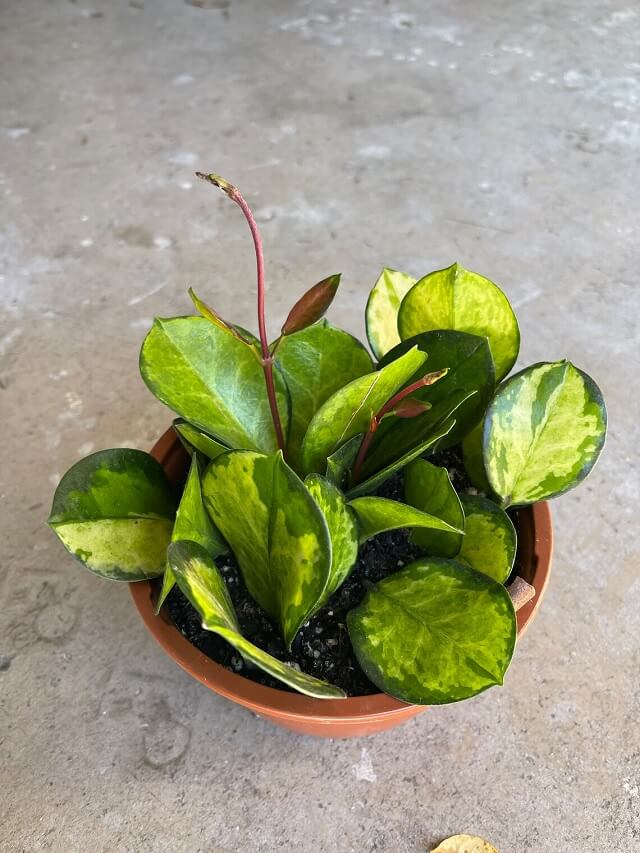
Hoya Australis Growth Rate
This plant is considered a fast-growing plant but some varieties have a slow growth rate. In ideal conditions, it can grow up to 12 inches per year. However, most varieties of Hoya Australis only grow to about six inches per year.
This plant is a perfect climber that prefers to climb on trees or other structures. It can be found in many different habitats, including rainforests and dry woodlands. This plant can be propagated by stem cuttings or by seed.
The best time to propagate this plant is in the spring or summer for a better growth rate.
Hoya Australis Plant Uses and Placement
It is mostly for decorative purposes such including:
- Use as a Groundcover: When planted in mass, Hoyas can make an excellent groundcover. They will spread quickly and fill in any area that you have.
- In a Hanging Basket: This is a beautiful plant that looks great in hanging baskets. The plant will cascade over the edge of the basket and produce beautiful blooms.
- Table Top Plant: Hoyas can also be used as a tabletop plant. They are perfect for adding a touch of greenery to any room in your home.
This plant does best in bright, indirect sunlight when it comes to placement. It can also tolerate some shade. This plant prefers to live in humid conditions. It is essential to water this plant regularly, especially during the summer months.
Over-watering can lead to root rot, so be sure to allow the soil to dry out between waterings.
This is a tough plant that can tolerate a wide range of temperatures. It can be placed outdoors in the summer months but should be brought inside during the winter to prevent frost damage.
This plant is not susceptible to many pests or diseases but can be affected by mealybugs and scale. If you notice any of these pests on your plant, treat them right away.
Hoya Australis Care
Hoya Australis is a straightforward plant to grow and care for. Below are the primary care requirements.
– Soil Requirement and Pot Size:
This plant prefers well-draining soil. A pot with drainage holes is necessary to prevent the plant from sitting in water. The pot size can be small to medium. Well-aerated soil, as well as fast-draining soil, is the best for this plant.
– Watering Hoya Australis:
Water the plant when the soil is dry to the touch. Allow the water to drain completely, and do not leave the plant sitting in water. Waterless often during the winter months, and during summer water more frequently.
While water is necessary for this plant, a lot of water can lead to root rot, killing the plant.
– Light and Exposure:
I need bright, indirect light but can tolerate some direct sunlight. Avoid placing the plant in an area where it will receive direct afternoon sun, which can scorch the leaves.
Also, avoid placing the plant in low light areas as this can cause the plant to become etiolated (leggy).
– Temperature Needs:
This plant requires average room temperatures of 65-75 degrees Fahrenheit but can tolerate a range of 60-80 degrees Fahrenheit. Maintaining the correct temperature is crucial because too much heat or cold can damage the plant.
– Humidity Requirements:
The Hoya Australis prefers high humidity but can tolerate average household humidity. The leaves can become crisp and brown if the air is too dry.
To increase the humidity around the plant, you can use a humidifier or place the pot on a tray of pebbles and water. Generally, the humidity levels should be around 40 – 60 percent. Besides, homes provide sufficient humidity levels for this plant.
– Fertilizing Hoya Australis Plant:
Fertilize the plant monthly during the spring and summer months with a balanced fertilizer diluted to half strength. During the fall and winter months, fertilize every other month.
– Does Hoya Australis Need Pruning?
Pruning is unnecessary but can be done to shape the plant if desired. Pruning can also be done to remove any dead or dying leaves or stems. When pruning, use clean, sharp shears to avoid damaging the plant.
Prune just above a leaf node to encourage new growth. By following the above tips, you can easily take care of your plant and enjoy its beautiful blooms for many years to come.
Hoya Australis Propagation
Hoya Australis can be propagated in water or soil. Below are the steps for each method.
Water Propagation:
You will need a clean glass jar and some sharp shears to propagate in water.
– Cut a stem just below a leaf node and remove the lower leaves.
– Place the stem in the jar of water and make sure that at least one leaf node is submerged.
– Place the jar in a bright, indirect location and change the water every few days.
– After a few weeks, you should see roots beginning to form.
– Once the roots are a few inches long, you can transplant them into the soil.
Soil Propagation:
You will need a pot with well-draining soil, some sharp shears, and a rooting hormone (optional).
– Cut a stem just below a leaf node and remove the lower leaves.
– Dip the bottom of the stem in rooting hormone (optional).
– Plant the stem in the soil, ensuring that at least one leaf node is buried.
– Water the well and place it in a bright, indirect location.
– After a few weeks, you should see new growth beginning to form.
– Once the plant is a few inches tall, you can transplant it into a larger pot.
Propagating Hoya Australis is a relatively straightforward process and can be done with just a few supplies. By following the steps above, you will successfully propagate your plants in no time.
Re-potting Hoya Australis Plant(with steps)
This plant will eventually outgrow its pot and need to be re-potted. Re-potting is a simple process and can be done every two years.
– Begin by removing the plant from its current pot. Gently loosen the roots and remove any excess dirt.
– Choose a new pot that is only slightly larger than the current one and has drainage holes.
– Fill the bottom of the pot with fresh, well-draining soil.
– Place the plant in the pot and fill it in around the roots with more soil.
– Water the well and place it in a bright, indirect location.
Re-potting is a necessary part of taking care of your Hoya Australis plant. With the steps above, you can easily re-pot your plant and keep it healthy for many years to come.
Hoya Australis Blooms
One of the best parts about owning a Hoya Australis plant is its beautiful blooms. These blooms can range from white to pink and are typically around an inch in diameter.
The flowers grow in clusters and can bloom year-round with proper care. To encourage blooming, make sure that your plant is receiving enough light.
The plant should be in a bright, indirect location and should not be getting too much or too little light. In addition, fertilize your plant monthly during the spring and summer months with a balanced fertilizer diluted to half strength.
With proper care, your Hoya Australis plant will bloom year-round and provide you with beautiful blooms to enjoy.
Hoya Australis Common Problems and Prevention
The following are some common problems with Hoya Australis and how to solve them.
– Root rot
One of the most common problems with growing Hoya Australis is root rot. This can be caused by overwatering or planting the Hoyas in soil that doesn’t drain well.
To prevent root rot, plant your Hoya in a pot with drainage holes and water only when the soil is dry to the touch.
– Mealybugs
Another common problem with Hoya Australis is mealybugs. Mealybugs are tiny white insects that suck the sap out of plants. They can cause leaves to be yellow and drop off and, in severe cases, can kill a plant.
To prevent mealybugs, regular inspection of your Hoyas is essential, and if you see any, promptly remove them with a cotton swab dipped in rubbing alcohol.
– Whiteflies
Whiteflies are tiny white insects that, like mealybugs, suck the sap out of plants. They can also cause leaves to be yellow and drop off. To prevent whiteflies, regular inspection of your Hoyas is essential, and if you see any, promptly remove them with a cotton swab dipped in rubbing alcohol.
– Aphids
Aphids are small, green insects that suck the sap out of plants. They can cause leaves to curl and distort and, in severe cases, can kill a plant.
To prevent aphids, regular inspection of your Hoyas is essential, and if you see any, promptly remove them with a cotton swab dipped in rubbing alcohol.
– Yellowing of leaves
One of the most common problems with Hoya Australis is the yellowing of leaves. This can be caused by several things, including nutrient deficiency, too much sun, or pests.
If you see your Hoyas starting to yellow, inspect them for pests and remove any. If there are no pests present, try giving them a little more sun or fertilizer.
– Slugs and snails
Slugs and snails are common pests that can damage Hoyas. They can cause leaves to become ragged and holes to appear in them.
To prevent slugs and snails, regular inspection of your Hoyas is essential, and if you see any, promptly remove them. You can also try putting traps for them, such as boards with beer on them.
– Wilting
Wilting can be caused by several things, including over/or underwatering, over-fertilizing, too much sun, or pests. If you see your Hoyas wilting, inspect them for pests and remove any.
If there are no pests present, try to determine the cause of the wilting and take corrective action. When you overfeed or overwater your plants, the excessive salt in the soil prevents the roots from absorbing water as they should.
This will cause the leaves to wilt. If you think you have overwatered your plants, try letting the soil dry out for a day or two before watering again.
If you feel you have overfed your plants, leach the excess fertilizer from the soil by running water through the pot. Too much sun can also cause wilting, so if you think this is the problem, try moving your Hoyas to a shadier spot.
These are just some of the common problems with this Hoya and how to solve them. By being vigilant and taking action quickly when you see a problem, you can keep your Hoyas healthy and happy.
FQAs
What Is Hoya Australis Lisa?
Hoya Australis Lisa is a type of Hoya that is native to Australia. It is an evergreen, perennial plant that can grow to about 20 feet tall. The leaves of the Hoya Australis Lisa are oval-shaped and pink shades of cream and green in color.
The flowers of this plant are white and have a sweet fragrance. This plant is often grown as a houseplant or in gardens. If you are thinking about growing Hoya Australis Lisa, there are a few things you should know about its care.
This plant does best in bright, indirect light. It prefers to be in soil that is well-draining and slightly acidic. Hoya Australis Lisa can be sensitive to overwatering, so it is important to only water it when the soil is dry to the touch.
This plant does not need to be fertilized often, and once every two months is typically sufficient.
Is Hoya Australis Easy To Grow?
Hoya Australis is not a difficult plant to grow. However, it does require a little bit of extra care and attention. Here are some tips on how to care for your Hoya Australis:
– Water your plant regularly, but make sure not to overwater it. The soil should be moist but not soggy.
– Place your plant in a bright spot but out of direct sunlight. Hoya Australis can tolerate some light shade, but too much shade will cause the leaves to turn yellow.
– Fertilize your plant every few weeks during the growing season. Use a balanced fertilizer that is low in nitrogen.
– Propagate Hoya Australis by stem cuttings. Take a cutting that includes a few leaves and some stems. Place the cutting in a moist potting mix and keep it warm and humid until new growth appears.
Is Hoya Australis A Suitable Houseplant For Beginners?
Hoya Australis is a great houseplant for beginners. It is easy to care for and can tolerate some neglect. If you are new to growing houseplants, Hoya Australis is a great plant.
Does the Hoya Australis Climb?
Yes, Hoya Australis does climb by nature. An epiphytic plant grows on other plants or objects for support. However, it can be trained to climb if you provide support for growing.
Is Hoya Australis a Rare Plant?
Hoya Australis is not a rare plant. It is widely available from nurseries and garden centers. However, it is not as common as some other species of Hoyas.
Is Hoya Australis Toxic To Pets Or Humans?
Hoya Australis is not toxic to pets or humans. However, the sap from the plant can cause skin irritation in some people. If you are allergic to latex, you may also be allergic to Hoya Australis.
If you experience any irritation after coming into contact with the plant, wash the area with soap and water and seek medical attention if necessary.
Do Hoya Australis Flower?
Hoya Australis does flower, but it is not the most spectacular bloomer. The flowers are small and white, and they have a sweet fragrance. They typically appear in late spring or early summer.
If you want to see the flowers, you will need to be patient and wait for them to bloom. However, the plant is still attractive even when it is not blooming. The leaves are dark green and glossy, and they provide a nice contrast to the white flowers.
Can I Grow Hoya Australis Under A Grow Light?
Yes, you can grow Hoya Australis under a grow light. This is a great way to get started with growing Hoyas. All you need is a basic understanding of how to set up your grow light and how to water your plants.
Can I Grow Hoya Australis In A Greenhouse?
If you’re thinking about growing Hoya Australis in a greenhouse, you might be wondering if it’s possible. The answer is yes! You can grow this plant in a greenhouse.
There are a few things to keep in mind when growing it in a greenhouse. Firstly, this is a tropical plant, so it needs warm temperatures and high humidity.
If you can provide these conditions in your greenhouse, Hoya Australis will thrive.
Secondly, This is a climbing plant, so it will need something to climb on. You can either provide a trellis or other support structure for it or let it climb on other plants.
Finally, It is a relatively slow-growing plant. Don’t expect it to grow too quickly in your greenhouse. With proper care, though, it will eventually reach its full size.
Where Can I Buy A Hoya Australis Plant?
If you’re looking for a place to buy Hoya plants, your best bet is online. Many reputable garden centers sell them at reasonable prices. Just make sure to do your research before buying from any particular nursery.
You can expect to pay around $15 to $20 for a small plant. Larger plants will cost more, of course. But no matter what size plant you buy, Hoya australis is a great addition to any greenhouse!
Final thoughts
In conclusion, It is a great plant to grow in your house. It is easy to care for and can tolerate a wide range of conditions. They are also very easy to propagate, so this is an excellent choice if you are looking for a plant to add to your collection.
The above article has provided you with all the information you need to grow and propagate your Hoya Australis plant. So what are you waiting for? Get out there and give it a try! You won’t be disappointed.

